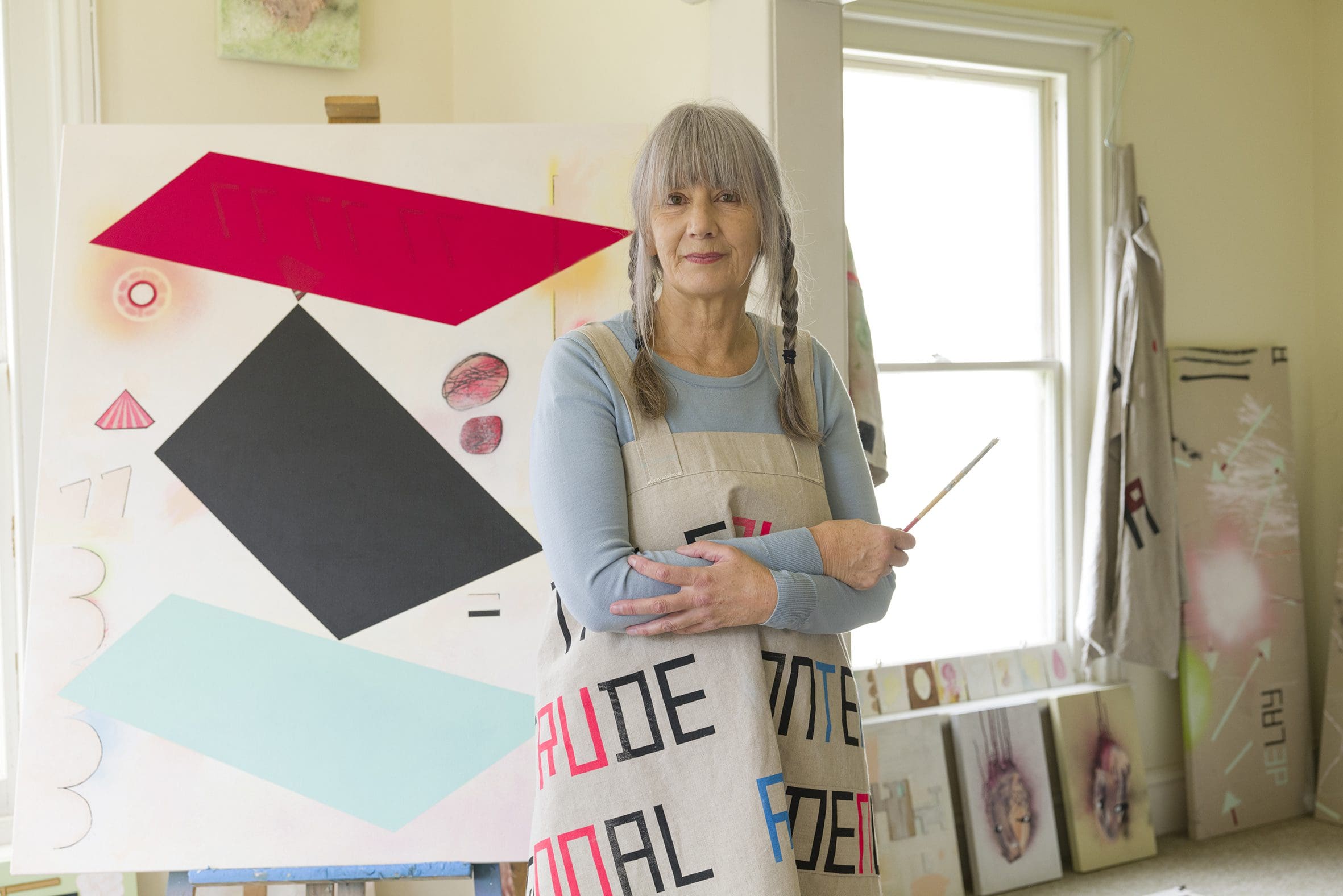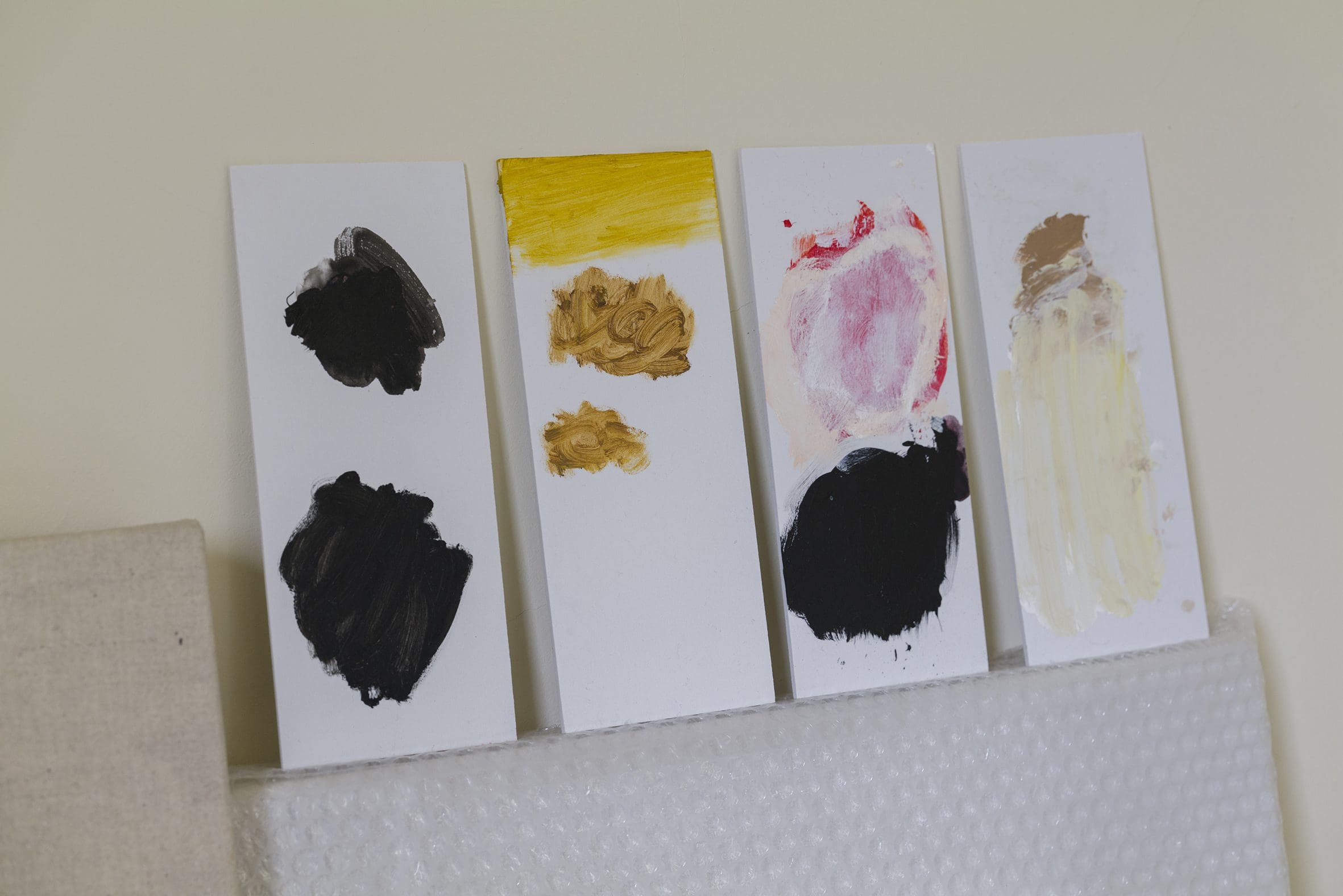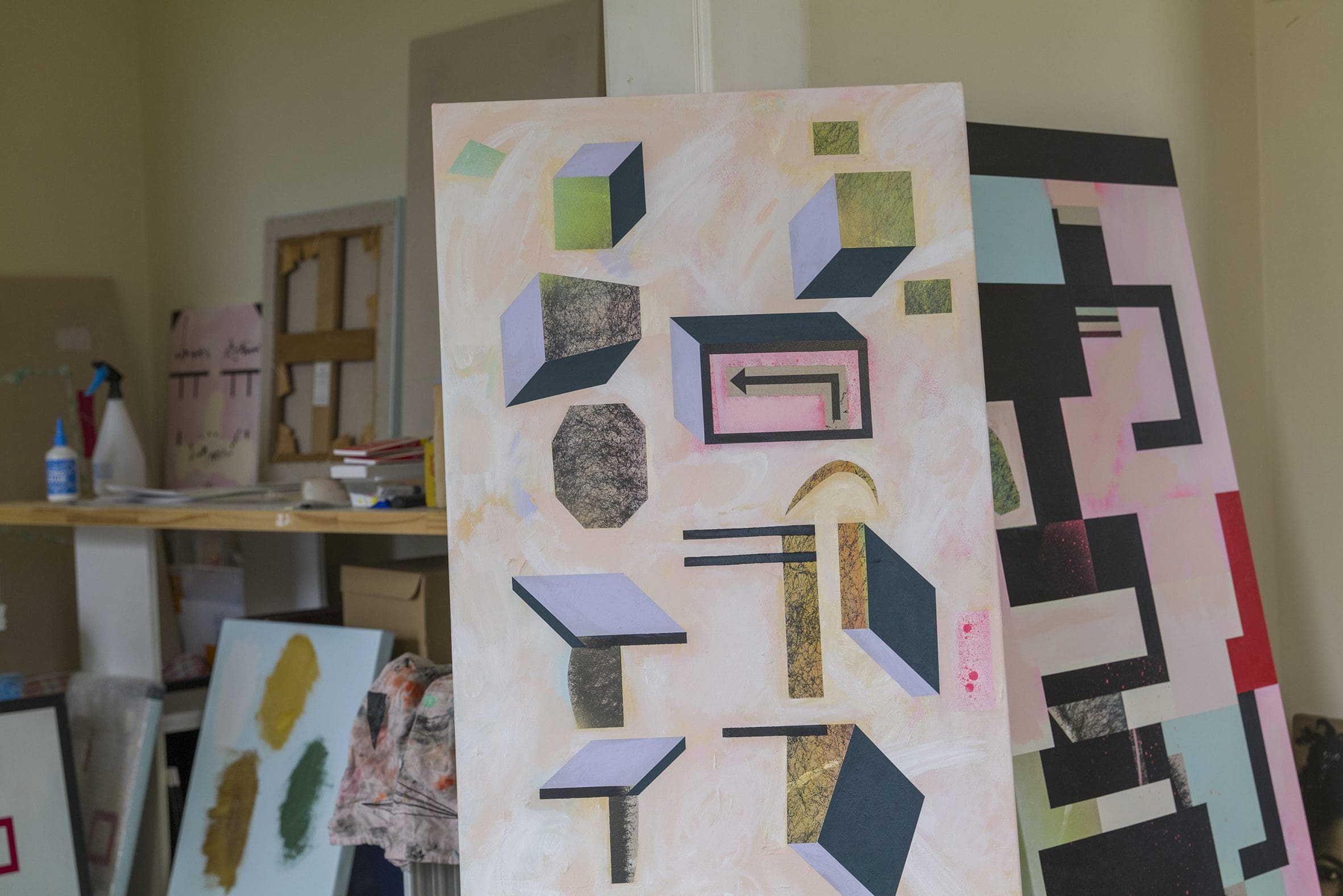
Finding New Spaces Together
‘Vádye Eshgh (The Valley of Love)’ is a collaboration between Second Generation Collective and Abdul-Rahman Abdullah weaving through themes of beauty, diversity and the rebuilding of identity.
Sarah crowEST’s multidisciplinary practice blends a range of materials and techniques to create layered works with oscillating, fragmented forms; both geometric and soft, visual and textual. Of particular brilliance are her “strap-on paintings”—large, wearable objects on stretched cloth that can be exhibited on a gallery wall or worn, blurring the line between fashion and traditional art forms. Ahead of her inclusion in Melbourne Now and her solo at LON Gallery, we caught crowEST in the final days of her year-long residency at Brighton’s historic Billilla Mansion in Melbourne, where she talks through the importance of sustainability to her practice.

Place
Sarah CrowEST: I’ve been here for nearly a year. It’s one of the studios offered by Bayside Council for free for one year to various artists. There are a few outbuildings where the other studios are, but I’m the only one that’s in this mansion. This is a perfect studio for sitting and doing little paintings because it’s got this beautiful light on two sides.
I was at Shakespeare Grove Artist Studios for four years—that was great because I had a really massive seven-metre-long wall that I could pin up my huge canvases to, and work really large. I’m always synchronising the body of work that I need to be doing at the time with the actual studio that I can access. Preparing for the next period when I will probably work at home before I find my next studio, I’m moving more towards painting at smaller scales.

Process
Sarah CrowEST: I spend a fair bit of time freely making things and not feeling like I have to be too constrained by a conceptual outline or imperative coming from elsewhere. I make a lot of work, and I accumulate stuff. I fold things from the past into what I might be doing now.
I’ve made quite a few bodies of textile work or groups of paintings that I’ve never even exhibited, just because I’ve moved on to another thing before I’ve had a chance to put them out there or talk about them. I roll things up and put them away, and then I rediscover them later. I think when you have a love of making and a very material practice, almost everything you do suggests other things, so it gathers its own momentum.
I pretty much have a no-waste studio practice. I’ve got all these things that are previously made or half-made, or things that I can pull apart and remake and recycle—so there’s this endless soup of resources around me. I’ve always been very much of the view that it’s more the form or the process that should carry the real meaning, rather than the subject or the content of the painting. That’s why I’ve developed this way of working with these sorts of materials that can be reused, and the no-waste and constant recycling is a fundamental part of it.
I use a lot of found materials. I’ve been using acrylic paints, which I’d like to phase out from my practice because they’re plastic. When I’ve been in various studio situations, other artists just chuck things out and I gather them up. I did some big wall paintings in the city during the lockdown, and I’ve got big cans of paint that I bought for that, which I’m still using. In fact, I used it for all the Melbourne Now stuff. Some of the materials I’ve got will probably last me until I die, and there’ll still be some left over.

Projects
Sarah CrowEST: I started making the strap-on paintings around 2012. I was using the canvas for painting and I needed something in the studio [to hold it], so I just put some straps on a tile, and that was the start of it. Because it was a rectangle, they all have these tabs on them so they can also work as a hanging painting, which is why I call them strap-on paintings. It really interested me.
On the surfaces of these I’ve tried to be quite rectilinear— with the text and the pockets and the straps, everything’s very straight—but as soon as you put them on the body, it all starts breaking up and going in angles. I think that’s a metaphor for everything that happens in the world: this imposition of control, then the way it breaks down and finds its own levels and waves and eruptions and destruction. There’s a backwards and forwards between them being something that straps onto the body and something that goes on to the wall. The Melbourne Now work is going to be a couple of flat paintings, and then a couple on pegs that people can try on.
There’s an interest in architecture that always emerges in my work. In this case, when I was first thinking about what to do [for Melbourne Now], I went to the Ian Potter Centre: NGV Australia at Federation Square and whenever I go in there, especially when I go up those escalators and stairs, it’s always amazing angles and pieces. I like the work I do to have some relation to the site, if I’m working on a commission like that. It was these points, these triangles, these angles, and I never use triangles—I’ve almost got a phobia about them—but I thought, “I’m going to disrupt my process, and I’m going to see what I can do with these angles.” These are actually some of the elements that I’ve sort of exploded. It’s much more about the feeling of them that I get from the architecture than going in and actually transcribing it, but they’ve all got these quite degraded and stained and blotched little graphic elements.

Melbourne Now
Ian Potter Centre: NGV Australia (Melbourne VIC)
24 March—24 August
Sarah crowEST
LON Gallery (Melbourne VIC)
29 March—22 April
This article was originally published in the March/April 2023 print edition of Art Guide Australia.